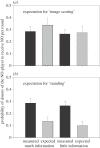Reputation, a universal currency for human social interactions
- PMID: 26729939
- PMCID: PMC4760200
- DOI: 10.1098/rstb.2015.0100
Reputation, a universal currency for human social interactions
Abstract
Decision rules of reciprocity include 'I help those who helped me' (direct reciprocity) and 'I help those who have helped others' (indirect reciprocity), i.e. I help those who have a reputation to care for others. A person's reputation is a score that members of a social group update whenever they see the person interacting or hear at best multiple gossip about the person's social interactions. Reputation is the current standing the person has gained from previous investments or refusal of investments in helping others. Is he a good guy, can I trust him or should I better avoid him as a social partner? A good reputation pays off by attracting help from others, even from strangers or members from another group, if the recipient's reputation is known. Any costly investment in others, i.e. direct help, donations to charity, investment in averting climate change, etc. increases a person's reputation. I shall argue and illustrate with examples that a person's known reputation functions like money that can be used whenever the person needs help. Whenever possible I will present tests of predictions of evolutionary theory, i.e. fitness maximizing strategies, mostly by economic experiments with humans.
Keywords: gossip; indirect reciprocity; reputation; social dilemma; updating rule.
© 2016 The Authors.
Figures







References
-
- Trivers RL. 1971. The evolution of reciprocal altruism. Q. Rev. Biol. 46, 35–57. (10.1086/406755) - DOI
-
- Berg J, Dickhaut J, McCabe K. 1995. Trust, reciprocity, and social-history. Games Econ. Behav. 10, 122–142. (10.1006/game.1995.1027) - DOI
-
- Duchenne de Boulogne G. 1862. The mechanism of human face expression. Paris, France: Jules Renard.
-
- Centorrino S, Djemai E, Hopfensitz A, Milinski M, Seabright P. 2015. A model of smiling as costly signal of cooperation opportunities. Adapt. Hum. Behav. Physiol. 1, 2–18. (10.1007/s40750-015-0026-4) - DOI
-
- Centorrino S, Djemai E, Hopfensitz A, Milinski M, Seabright P. 2015. Honest signalling in trust interactions: smiles rated as genuine induce trust and signal higher earning opportunities. Evol. Hum. Behav. 36, 8–16. (10.1016/j.evolhumbehav.2014.08.001) - DOI
Publication types
MeSH terms
LinkOut - more resources
Full Text Sources
Other Literature Sources
Medical

